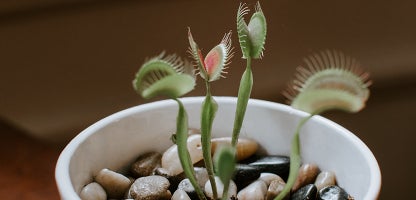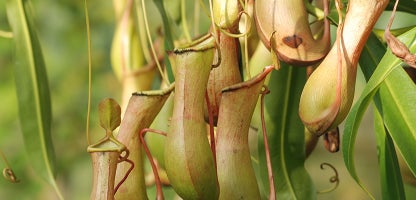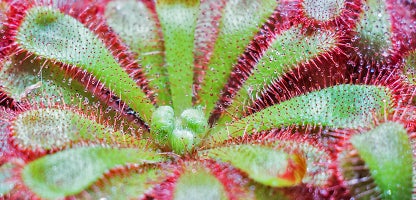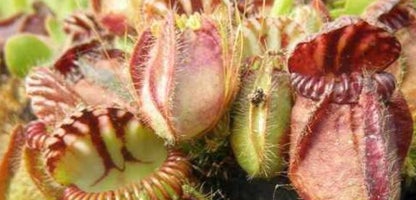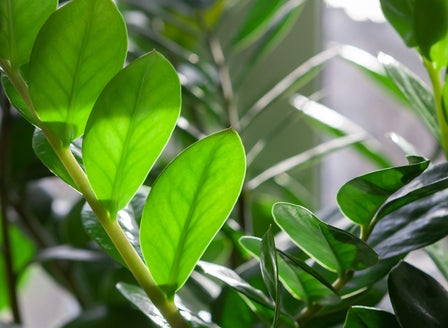Carnivorous plants make for an interesting and unusual point of interest, engaging both young and old alike. Plants such as Pitcher Plants, Sundews and Venus Fly Traps all require similar growing conditions and dietary requirements. Naturally found growing in boggy, low-nutrient soils, they have developed specialised techniques of supplementing their nutritional requirements.
Planting Calendar
Carnivorous plants are available from November to February. This is when they are thriving and enjoying the subtropical weather of Auckland.
Prepare
Position
When grown indoors, Carnivorous plants require bright, indirect light. They can tolerate morning or afternoon sun coming in through the window, although direct midday sun may burn the leaves. More intense light will cause red colouration to develop on Venus fly traps, and intensify the colour of pitcher plants. When grown outdoors provide them with a position in full sun, as long as the soil is kept wet. Some protection from wind is beneficial. Great when planted in a mixed group in a container that has no drainage holes.
Soil
Carnivorous plants are best planted in very free-draining mediums that do not contain any fertiliser. Planting into Peat or Sphagnum Moss is recommended.
Plant
Carnivorous plants can be planted into the ground where the soil is wet, add Peat and Sphagnum moss to assist with moisture retention. Alternatively they can be grown into containers, plant into a mixture of Peat and Sphagnum moss.
Care
Beginner Tip
When watering carnivorous plants, use collected rainwater as they dislike the chlorine in water from the tap.
Expert Tip
Pitcher plants go dormant during the cold months of the year, At this time the pitchers go brown. Leave these on the plants until new Pitchers appear then carefully cut the brown ones off. Flowers usually appear before the new pitchers.
Tip
As tempting as it may be, triggering the traps for fun uses a lot of their energy, so keeping your hands away from their traps is recommended.
Top Varieties
Frequently Asked Questions
What types of carnivorous plants do you sell?
Kings mainly sells pitcher plants, venus flytraps, 'Albany' pitchers and sundews.
What type of soil should I use for carnivorous plants?
Carnivorous plants are best planted in very free-draining mediums that do not contain any fertiliser. Planting into Peat or Sphagnum Moss is recommended.
How often should I water my carnivorous plants?
Because these plants come from boggy locations, they have high water requirements. Mediums and soils should retain moisture – planting in peat is ideal. Keep a saucer of water underneath your carnivorous plant; be sure the saucer is always full (except in winter).
Why are the leaves of my Venus flytrap turning black?
Blackening leaves can be due to a variety of reasons including overfeeding, poor water quality, or natural dieback as the plant grows. Ensure proper care and avoid feeding it too frequently.
Do carnivorous plants need to be fed insects?
Carnivorous plants do not need fertilisng as they feed on insects and broken organic matter that they catch.
